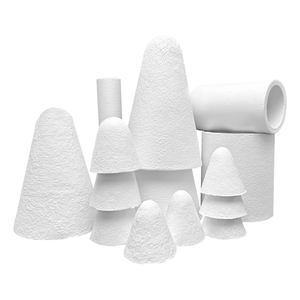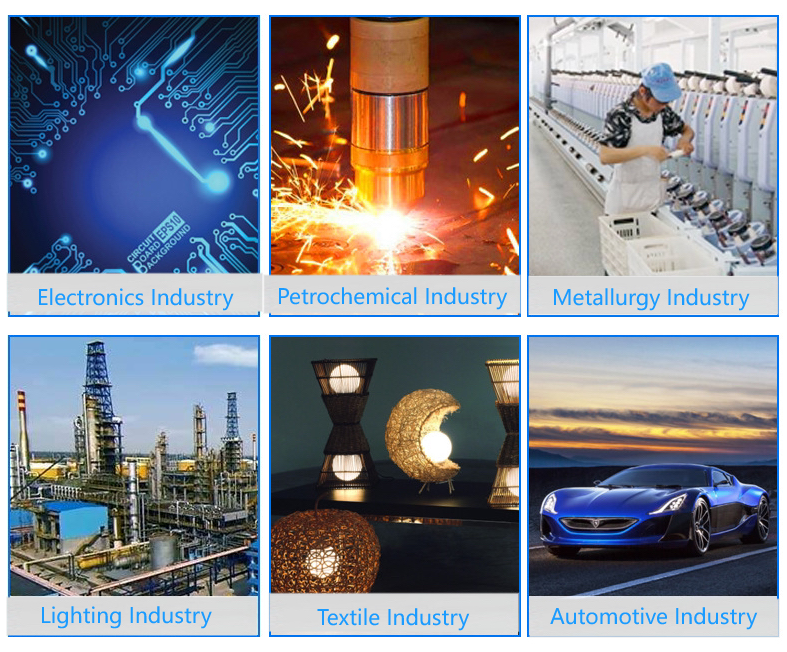Professional industry ceramic supplier, silicon nitride, silicon carbide, aluminum nitride and any other kinds of ceramics.
PRODUCT PARAMETERS
Description
Overview of Whole Corundum Mullite Ceramic Parts Industrial Refractory
Whole Corundum Mullite Ceramic Parts Industrial Refractory are non-metallic substances designed to withstand extreme temperatures exceeding 1,000°C, along with harsh chemical and physical stresses. They are essential for the inner linings of industrial furnaces, kilns, reactors, and incinerators, providing critical thermal insulation and structural integrity in processes ranging from metal and glass manufacturing to power generation.
Features of Whole Corundum Mullite Ceramic Parts Industrial Refractory
-
High-Temperature Resistance: Maintain structural strength and stability at temperatures often exceeding 1500°C.
-
Excellent Thermal Shock Resistance: Withstand rapid heating and cooling cycles without cracking or spalling.
-
Chemical Inertness: Resist corrosion and degradation from slags, molten metals, and acidic or basic environments.
-
High Mechanical Strength: Possess considerable load-bearing capacity at operating temperatures.
-
Low Thermal Conductivity: Provide effective insulation to improve energy efficiency and protect furnace structures.
-
Abrasion Resistance: Withstand erosion from solid materials and gas flows.
Specification of Whole Corundum Mullite Ceramic Parts Industrial Refractory
Here are diamond mullite ceramic parts. These are commercial refractories. They handle severe heat effectively. They are made mainly from alumina and mullite. This mix provides special properties. They are solid and challenging. They stand up to putting on down. They take care of sudden temperature changes without breaking. This is thermal shock resistance. It is essential in severe commercial setups.
These components work well at extremely heats. They can take care of constant consume to about 1800 ° C. Short ruptureds can go even greater. They don’t thaw or soften conveniently. They keep their form under heat. This is called high refractoriness under tons. It means they do not bend or collapse in heating systems.
The material is extremely thick and hard. This makes it immune to abrasion. Dirt and fragments don’t use it down promptly. It also withstands assault from numerous chemicals. Acids and alkalis cause less damages. This suggests the components last much longer. This saves money on replacements.
Diamond mullite has reduced thermal growth. It doesn’t broaden a lot when warmed. This aids protect against fracturing throughout home heating and cooling down cycles. It also means the components keep their dimension accurately. This benefits precise applications.
You locate these parts in lots of warm locations. They line kilns for shooting ceramics and bricks. They are utilized in furnaces for melting metal and glass. They work in burners. They are located in radicals in petrochemical plants. They are utilized for burner nozzles, thermocouple tubes, and saggers. They benefit kiln furniture. They support products being discharged. They are strong sufficient for this task. They can be made right into complex forms. This permits custom-made designs for particular equipments.
Applications of Whole Corundum Mullite Ceramic Parts Industrial Refractory
Whole corundum mullite ceramic parts are difficult products for extreme warmth. They manage really heats well. They resist chemical assault and thermal shock. They last much longer than many other refractories. This conserves money on replacements and downtime.
These ceramic parts are essential in steelmaking. They line blast heaters, hot blast cooktops, and torpedo ladles. They deal with intense heat and molten slag. They operate in converters and electrical arc furnaces as well. They secure the furnace structure. They withstand harsh problems reliably.
Glass production relies on them greatly. They form the storage tank obstructs and superstructure in glass heaters. They speak to molten glass directly. They withstand erosion from the glass melt. They are made use of in feeder channels and throat areas. Security at high warmth is crucial below.
Non-ferrous metal production makes use of these ceramics. They line heaters melting copper, aluminum, and zinc. They endure hostile liquified steels and slags. Crucibles and wash systems gain from their stamina. They handle duplicated home heating and cooling cycles.
The petrochemical industry needs these parts. They line reformers and biscuits processing oil and gas. They face heats and destructive gases. They keep integrity under tension. Driver assistance grids use them for their stability.
Power generation plants mount them. They are utilized in boiler sections revealed to severe warm. They handle fly ash abrasion and burning gases. They are located in waste incineration systems. They deal with the destructive atmosphere effectively.
These porcelains are necessary for demanding commercial procedures. They offer superior efficiency where various other materials fail. Their resilience boosts functional effectiveness substantially. Industries worth their long service life.
Company Profile
Tanki New Materials Co.Ltd. focus on the research and development, production and sales of ceramic products, serving the electronics, ceramics, chemical and other industries. Since its establishment in 2015, the company has been committed to providing customers with the best products and services, and has become a leader in the industry through continuous technological innovation and strict quality management.
Our products includes but not limited to Aerogel, Aluminum Nitride, Aluminum Oxide, Boron Carbide, Boron Nitride, Ceramic Crucible, Ceramic Fiber, Quartz Product, Refractory Material, Silicon Carbide, Silicon Nitride, ect. please feel free to contact us.
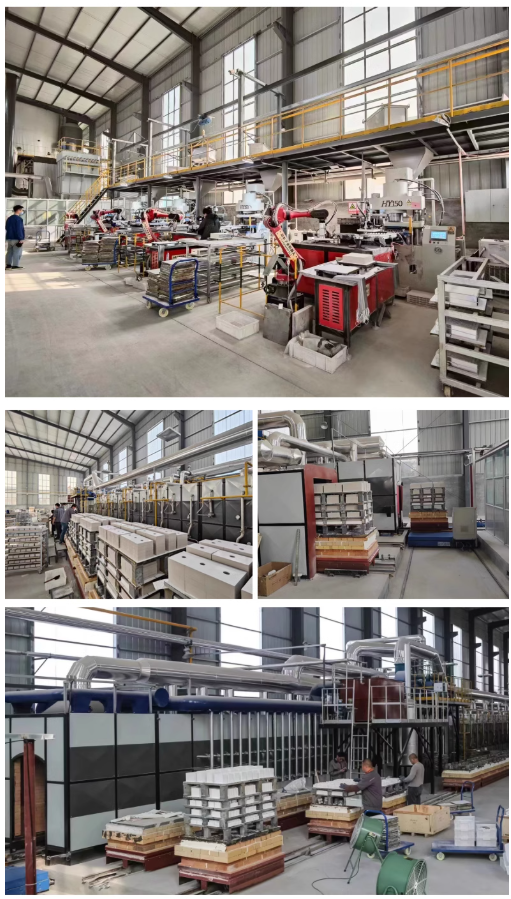
Payment Methods
T/T, Western Union, Paypal, Credit Card etc.
Shipment Methods
By air, by sea, by express, as customers request.
5 FAQs of Whole Corundum Mullite Ceramic Parts Industrial Refractory
What are whole corundum mullite ceramic parts made of?
These parts use corundum and mullite minerals. They are bonded together tightly. This creates a very strong material. It handles extreme conditions well.
Why pick these parts over other refractories?
They resist heat much better. They handle temperatures over 1800°C easily. They are tougher against wear and chemical damage. They last longer in harsh settings. This means less downtime and lower costs.
Where are these ceramic parts typically used?
You find them in demanding industrial furnaces. They work well in kilns. They are good for reactors. They suit places needing high heat stability. They are common in steel, glass, and chemical processing.
Are these parts difficult to install?
Installation needs care. The parts are precision-made. They fit specific designs. Follow the manufacturer’s instructions closely. Proper installation ensures peak performance and long life.
Can I get custom shapes and sizes?
Yes, manufacturers offer custom work. They can make parts to your exact furnace or equipment needs. Provide your detailed specifications. They will produce parts matching your requirements.
REQUEST A QUOTE
RELATED PRODUCTS
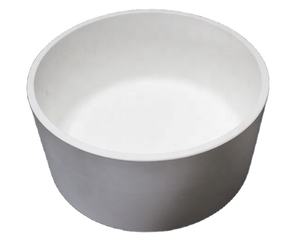
High Heat Resistance Refractory Cordierite Mullite Ceramic Part For
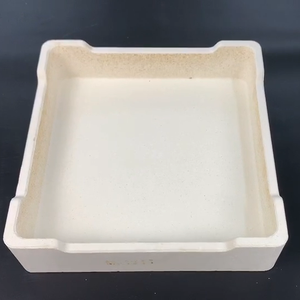
2300F Fire Proof Resistant Refractory Refractory Ceramic Fiber Board For Wood Stove
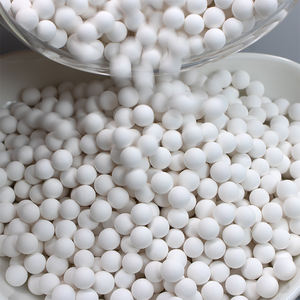
Alumina Silicate Fiber Ceramic Fiber Board 100-1800C Refractory Heat Insulation For Furnace Use
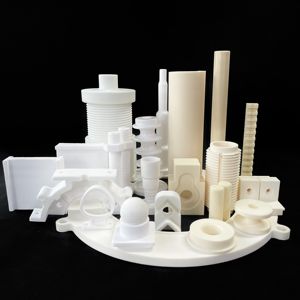
High Purity Carbon Graphite Crucible Isostatic Refractory Materials for Precious Metal Smelting and Cast Iron Casting
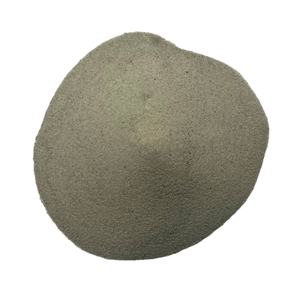
Heat Resistant Aluminium Silicate Insulation Board Isolation Ceramic Fiber Board for Refractory Applications


